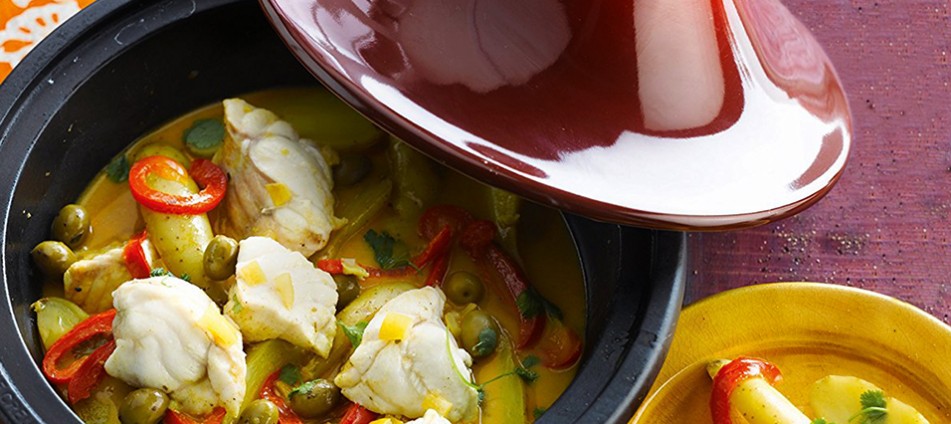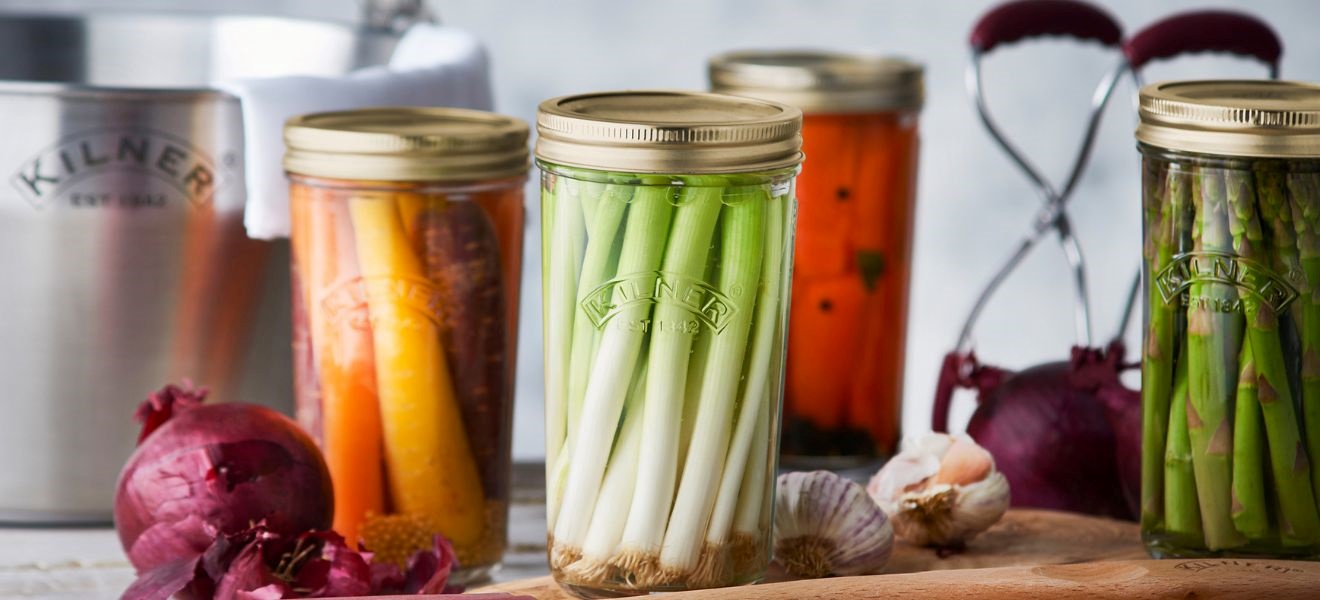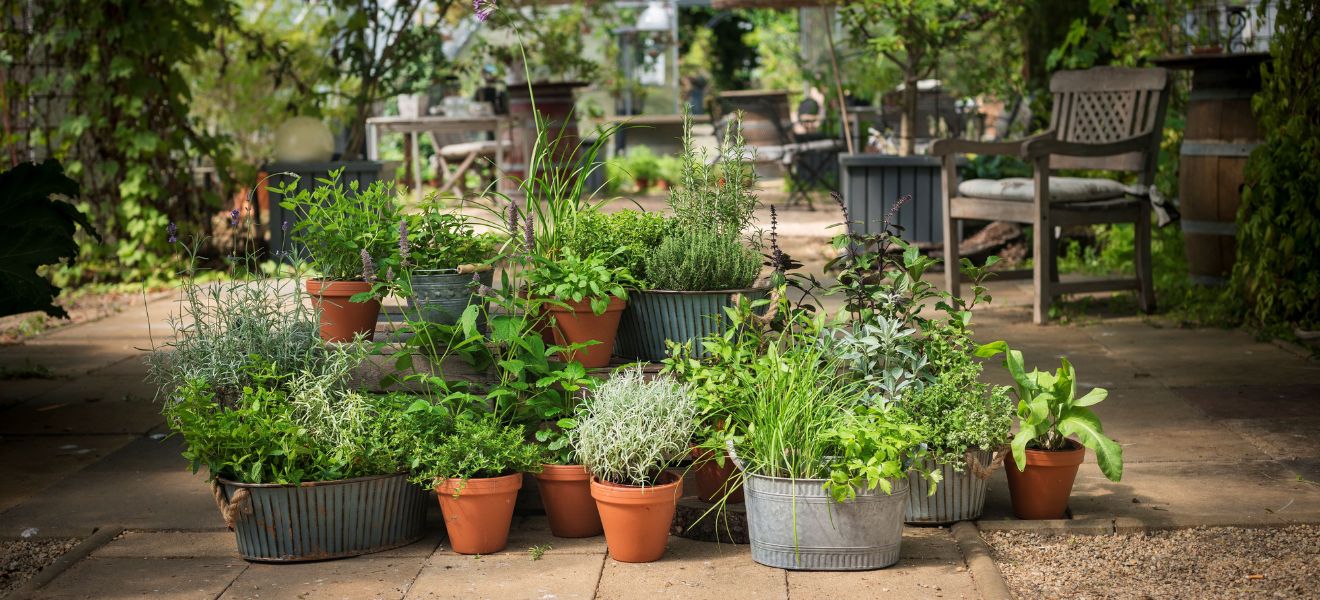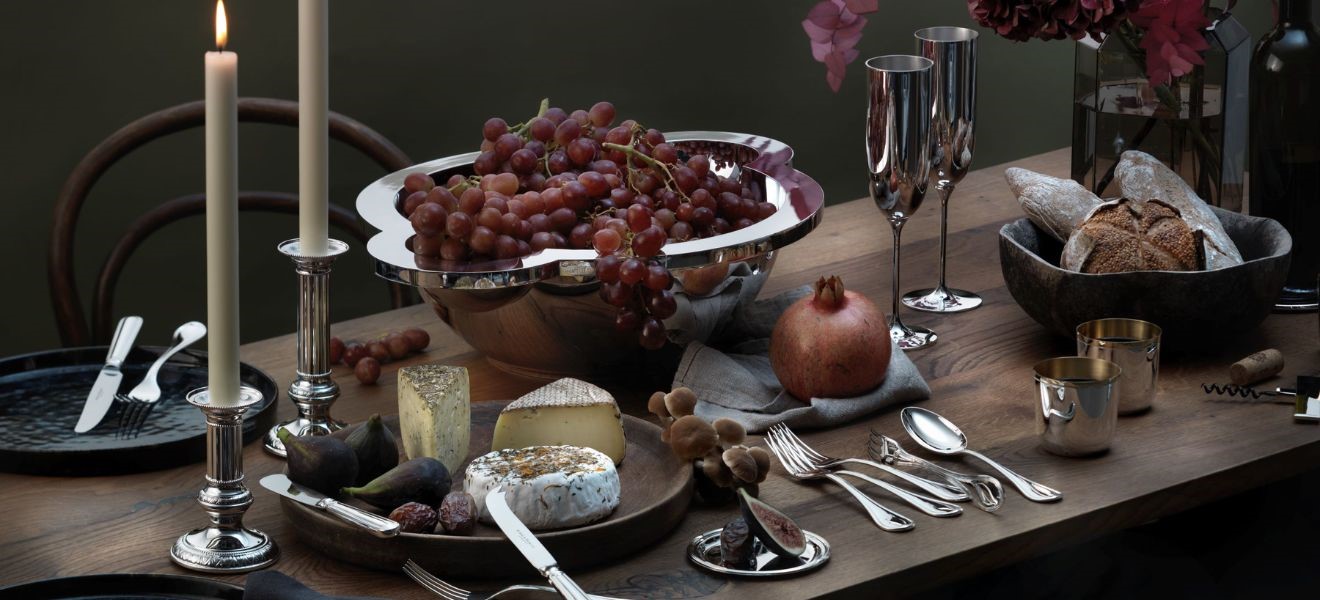Good things come to those who wait. It’s especially true in the kitchen, when we braise classic winter dishes like stews, roasts, goulash and ragout to warm us, body and soul. Earthenware, stoneware and ceramic dishes work especially well and are currently enjoying a comeback to the kitchen. Here’s to tasty tradition, slow cooking and your good health!
Try a little tenderness
As with so many kitchen and cuisine trends, preparing food in non-metallic vessels like earthenware pots or ceramic roasting pans is a link to tradition and artisan cooking, and to the good old-fashioned products and ingredients that our grandparents knew and loved. We’re increasingly buying regional and seasonal produce, we set store by freshness and authenticity, and we take time to prepare and enjoy our food. Slow cooking provides a calming counterpoint to the stress of deadlines and rushed lunch breaks. The best relaxed-pace dishes involve braising, like stews and roasts.

- Ceramic pots from:
- 1 Staub
- 2 Emile Henry
- 3 Römertopf
- 4 Ceramiwave
- 5 Appolia
All-round genius
Cooking and baking in stone and earthenware dates back to the days when people prepared food over an open fire, or used the thermal properties of clay by burying the ingredients in the earth to cook slowly. Even now, many regional cuisines maintain the tradition of slow, gentle cooking in pots and roasting dishes made from sand, clay, earth or ceramics. The North African tagine continues to be popular, as are the Turkish Güveç pot, the Indian tandoor and Spanish cazuela (although the latter is now mainly used to present typical dishes). Last but by no means least, in Germany the Römertopf brand of ceramic cookware has been popular since the 1970s for preparing Sunday roasts.

- Ceramic pots from:
- 1 Graupera
- 2 ASA Selection
- 3 Ovenlove
- 4 Excelsa
- 5 Le Creuset
Slow burn towards an explosion of flavour
Meat melts in your mouth, fish stays succulent, and vegetables retain their bite. Not only does this old-school cooking technique offer an alternative to the popular sous-vide method, but it’s also bang on trend. No wonder professional chefs love it too! “In our restaurant, slow-cooked dishes have been bestsellers for years. Braised lamb or beef shoulder, ox tail or calf’s head – I love preparing meals this way,“ explains Hans Jörg Bachmeier from the famous Blauer Bock restaurant in Munich. “That’s because this method can create an explosion of flavour like no other.” He also says very little can go wrong, because “if you’re using a good pot then the liquid drips back on top of the food while it simmers, so the taste intensifies without becoming overly seasoned.” The chef explains that desserts and sweet dishes can also be prepared in this type of dish, “especially specialities from southern Germany such as sweet yeast dumplings, filled dough rolls and dessert soufflés like “Scheiterhaufen” or a pancake soufflé with quark and raisins.”
Tasty, modern and sociable
Our TV chef loves this slow cooking trend, and not just because of the great taste. It really comes into its own when he invites a group of people over to eat, and he either cooks or has them bring several dishes to serve all at once. Everyone feels at home, and can try a bit of everything. “I find it much better for sharing and communication than cooking a meal with several courses.” Of course there are other cultures where this idea is already commonplace, for instance in North Africa, where people habitually gather for shared meals. And as Mounir Chaikhoun from the “Mounir” restaurant in Frankfurt explains, nobody arrives empty-handed – or with an empty dish. We asked him to share a recipe from his home land of Morocco. Here’s the delicious dish he chose, prepared in a traditional tajine, which he says is “synonymous with North African cuisine”.
Lemon chicken tagine
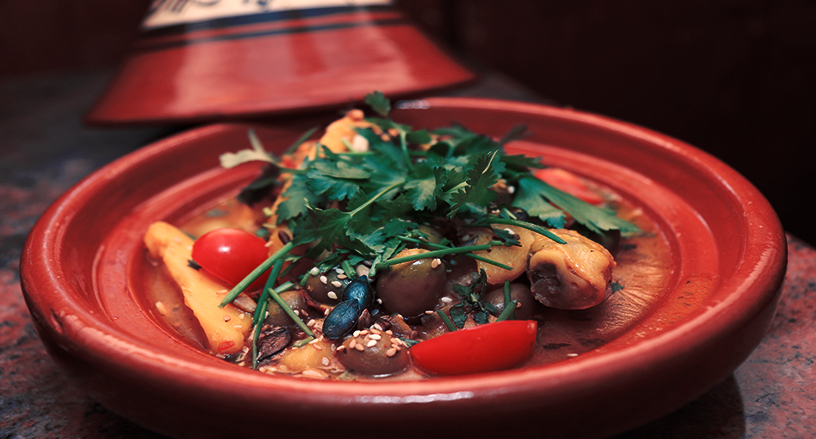
- Ingredients:
- 4 preserved lemons
- 400 g waxy potatoes
- 200 g green olives
- 1 large onion (chopped coarsely)
- 1 bunch flat-leaved parsley
- 1 bunch coriander (shredded coarsely)
- 8–10 small chicken legs
- 4 vine-ripened tomatoes
- 1 teaspoon turmeric
- 1 teaspoon allspice
- 1 teaspoon cardamom
- 4 cloves garlic
- salt and pepper to taste
- 100 ml vegetable stock
- 6–7 tablespoons oil
Method:
Finely chop the preserved lemons. Retain the liquid in which they were stored to add to the tajine later. Also retain the water from the olives and add when stewing.
Pour the oil and spices into a large bowl. Mix together and add salt and pepper: this is the marinade for your vegetables and chicken. Marinate the vegetables for 10 minutes and fold in the chopped parsley and coriander. Spoon the vegetables into the tagine.
Next turn the chicken legs over in the marinade until they are evenly coated. Put the chicken in the tajine on top of the vegetables, and close the lid.
Braise over a medium heat for around 10 minutes, then cook in the oven at 160°C for approximately 40 minutes. Allow to cool slightly before serving.
